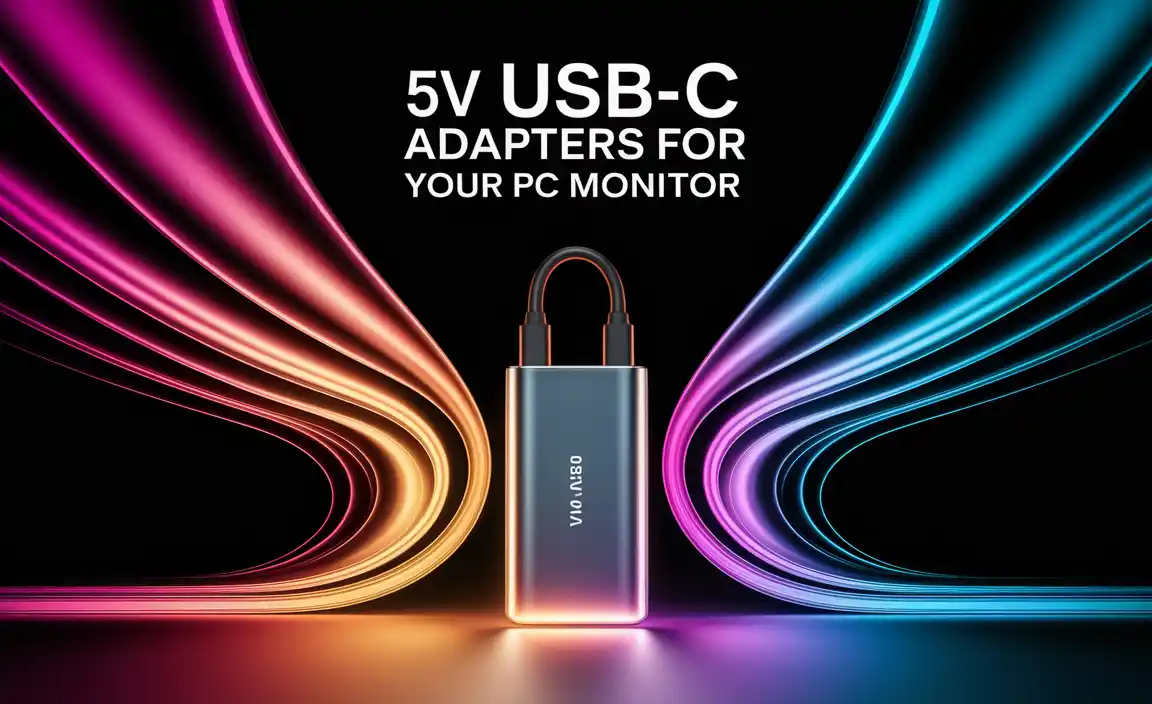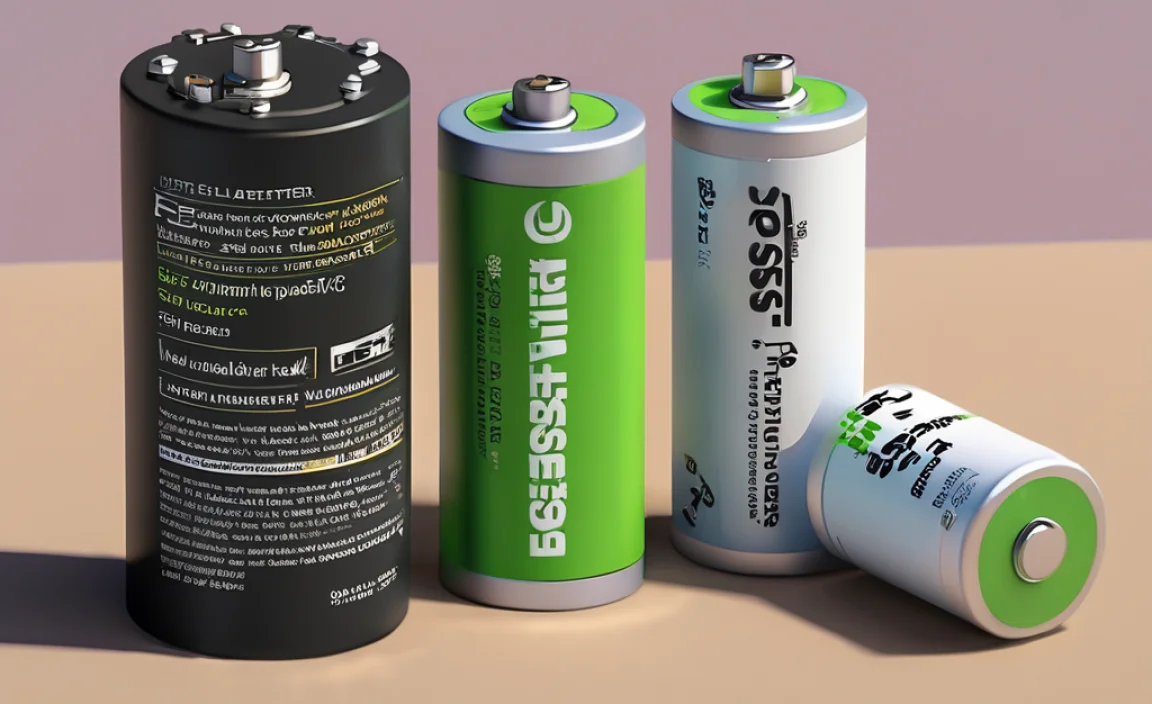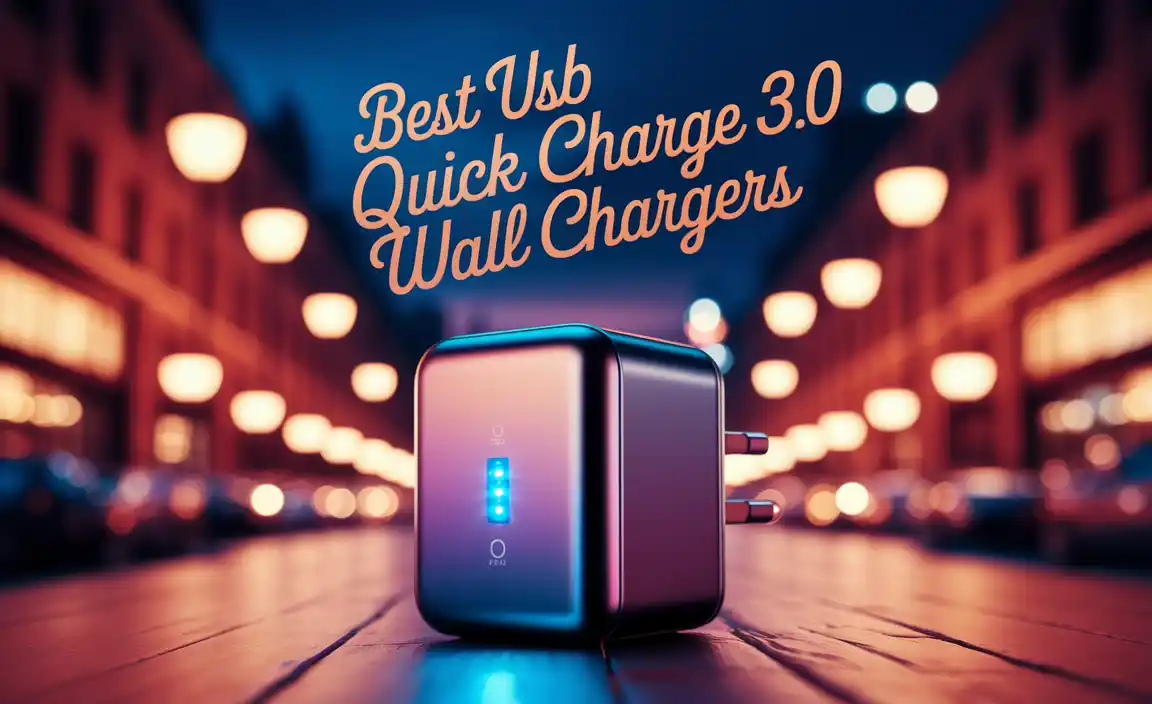Quick Summary: A deep cycle trickle charger is essential for maintaining your car battery’s health, preventing costly replacements. It provides a steady, low-level charge to keep your battery topped up, especially during periods of inactivity, ensuring it’s always ready to go and extending its lifespan significantly.
Is Your Car Battery Always Ready to Go? The Trickle Charger Secret
Ever tried to start your car after it’s been sitting for a while, only to hear that dreaded click instead of a healthy engine roar? It’s a common frustration! A dead car battery can leave you stranded, disrupt your plans, and lead to expensive tow truck calls and battery replacements. But what if there was a simple, affordable way to keep your battery healthy and ready, even if you don’t drive your car every day?
Many of us rely on our cars without giving much thought to the battery that powers it all. When it dies, it’s a surprise we wish we could avoid. The good news is, you can! This article will introduce you to a secret weapon in battery care: the deep cycle trickle charger. We’ll break down exactly what it is, why it’s so important, and how it can save you time, money, and a whole lot of hassle. Get ready to feel confident about keeping your car battery in tip-top shape.
What Exactly is a Deep Cycle Trickle Charger?
Let’s demystify this tool. A trickle charger is a small device designed to keep a battery’s charge topped up. Think of it like a very slow, steady drip ensuring a bucket never runs dry. A “deep cycle” battery is built for longer, slower discharges, like those used in RVs, boats, or golf carts, but the principle of keeping them charged applies here too, especially to our car batteries when they’re not in heavy use.
A deep cycle trickle charger specifically aims to maintain a healthy charge in a battery without overcharging it. Modern trickle chargers are smart; they can detect when the battery is full and stop charging, or drop to a very low charge rate to maintain it. This is crucial because constantly overcharging a battery can actually damage it over time.
Why Your Car Battery Needs This Kind of Care
Car batteries are workhorses, but they have their limits. They are designed to deliver a big burst of power to start the engine and then be recharged by the car’s alternator while you drive. However, if your car sits idle for extended periods – maybe you work from home, go on vacation, or only use your car on weekends – the battery’s charge can slowly drain. This is often called parasitic drain, where small electrical components continue to draw power even when the car is off.
When a battery is left discharged for too long, it can suffer from sulfation. This is a process where lead sulfate crystals form on the battery plates. If left unchecked, these crystals harden and can permanently reduce the battery’s capacity and ability to hold a charge. A trickle charger combats this by keeping a small, consistent charge flowing, preventing deep discharge and sulfation.
The Benefits: Why a Trickle Charger is a Smart Investment
Investing in a good trickle charger might seem like an extra expense, but the savings and convenience it offers are significant. It’s all about proactive care to avoid reactive, often costly, problems.
Key Advantages:
- Extended Battery Life: By preventing deep discharges and sulfation, a trickle charger can help your car battery last much longer. The average car battery lifespan is 3-5 years, but proper maintenance can push this towards the higher end or even beyond.
- Reliable Starts: No more worrying about whether your car will start after a few days off. Your battery will be consistently charged and ready for action, saving you from being stranded.
- Cost Savings: Replacing a car battery can cost anywhere from $100 to $300 or more, depending on the type. A trickle charger typically costs between $20 and $60, making it a very economical way to protect your investment.
- Convenience: It’s a set-and-forget solution. Once plugged in, it does its job without you needing to do anything else.
- Environmental Friendliness: A longer-lasting battery means fewer batteries ending up in landfills, which is good for the environment.
Who Needs a Deep Cycle Trickle Charger?
While beneficial for all car owners, some situations and types of users will find a trickle charger particularly invaluable.
Ideal Users Include:
- Seldom-Used Vehicles: If you have a classic car, a project car, or a second vehicle that isn’t driven daily, a trickle charger is almost a necessity to keep its battery healthy.
- Seasonal Drivers: Cars that are only used during certain times of the year (e.g., convertibles in summer, snowmobiles in winter) benefit greatly.
- Road Trip Enthusiasts: Before a long journey, ensuring your battery is fully charged is wise. A trickle charger can be used to top it up before you hit the road.
- Owners in Extreme Climates: Very cold or very hot weather can be hard on batteries. Keeping them on a trickle charger can help them perform better and last longer in these conditions.
- Anyone Concerned About Battery Health: If you want peace of mind and want to avoid the inconvenience of a dead battery, a trickle charger is a simple way to achieve that.
Understanding Different Battery Types and Chargers
When we talk about car batteries, we’re usually referring to lead-acid batteries. These are the traditional type used in most vehicles. However, there are different chemistries and designs. Similarly, chargers come in various forms.
Common Car Battery Types:
- Flooded Lead-Acid: The most common type, with removable caps to check electrolyte levels.
- Sealed Lead-Acid (SLA): Also known as maintenance-free batteries, they are sealed and don’t require topping up with water. Most modern cars use these.
- Absorbent Glass Mat (AGM): A type of SLA battery where the acid is absorbed in fiberglass mats. They are more durable, tolerate vibration better, and charge faster but are more expensive.
- Lithium-Ion (Li-ion): Increasingly found in high-performance vehicles or as aftermarket upgrades, they are lighter and offer more power but require specific charging systems.
For most standard car batteries (flooded and SLA), a basic 12-volt trickle charger designed for lead-acid batteries is suitable. For AGM batteries, it’s best to use a charger specifically designed for them, as they have slightly different charging voltage requirements. Always check your car’s manual or the battery itself for recommended charging methods.
Types of Battery Chargers:
| Charger Type | Description | Best For |
|---|---|---|
| Trickle Charger | Provides a low, continuous charge, typically 1-2 amps. Slow and steady. | Long-term maintenance of deeply discharged batteries without overcharging. |
| Standard Battery Charger | Higher amperage output (e.g., 5-10 amps). Charges faster than a trickle charger. | Reviving a moderately discharged battery or bringing a normal battery back up to full charge. |
| Smart/Automatic Charger | Monitors battery voltage and adjusts charging rate. Many can also desulfate. | Versatile use, from maintenance to full charging, with built-in safety features. Often a good choice for mixed battery types. |
| Battery Maintainer | Similar to a trickle charger but often “smarter,” only delivering power when needed. | Keeping batteries topped up during long periods of inactivity. |
For the purpose of maintaining a car battery without driving, a “trickle charger” or “battery maintainer” is what you’re looking for. Ensure it’s specified for 12-volt batteries and is compatible with your car’s battery type.
How to Choose the Right Deep Cycle Trickle Charger
Navigating the sheer number of chargers available can be confusing. Roy Walker’s advice? Keep it simple and focus on what truly matters for safety and effectiveness.
What to Look For:
- Voltage Compatibility: Most cars use 12-volt systems. Ensure the charger is designed for 12V batteries.
- Amperage Rating: For maintenance, a low amperage (1–2 amps) is ideal. This is what defines a trickle charger and prevents overcharging. Higher amps charge faster but aren’t suitable for long-term maintenance.
- Automatic Shut-off/Float Mode: This is crucial for safety and battery health. A good charger will automatically reduce the charge rate or stop when the battery is full, entering a “float” or maintenance mode.
- Spark-Proof Terminals: Safety first! This feature prevents sparks when connecting or disconnecting the charger from the battery, which is important around flammable battery gases.
- Reverse Polarity Protection: Another critical safety feature. It prevents damage to the charger and your car’s electrical system if you accidentally connect the positive and negative clamps to the wrong terminals.
- Weather Resistance (Optional but Recommended): If you plan to leave the charger connected in an unheated garage or outdoors, look for a model that can handle moisture and temperature variations.
- Brand Reputation and Reviews: Stick with well-known brands and check customer reviews for reliability and ease of use.
Reputable Brands to Consider:
While I don’t endorse specific products, brands like CTEK, Battery Tender, NOCO, and Schumacher are widely recognized for producing reliable battery chargers and maintainers. A quick search on an online retailer for “12V trickle charger” or “battery maintainer” will show you many options.
Step-by-Step: Connecting Your Trickle Charger Safely
Connecting a trickle charger is straightforward, but safety is paramount. Batteries can produce flammable hydrogen gas, and incorrect connections can damage your car’s electronics. Always follow these steps carefully.
Tools You’ll Need:
- Your chosen 12-volt trickle charger
- Safety glasses
- Gloves (optional, for cleanliness)
- A clean cloth or wire brush (to clean battery terminals if corroded)
The Connection Process:
- Read the Manual: Always start by reading the instruction manual for both your trickle charger and your vehicle’s owner manual.
- Locate Your Battery: Open your car’s hood and find the battery. It’s usually a rectangular box with two terminals (posts) on top, labeled ‘+’ (positive) and ‘-‘ (negative). Sometimes, the battery might be located in the trunk or under a seat – check your owner’s manual if you can’t find it.
- Ensure the Vehicle is Off: Make sure the car’s ignition is completely off, and all accessories (lights, radio, etc.) are off.
- Clean Battery Terminals: If you see any white or bluish-green corrosion on the battery terminals, clean them. You can use a wire brush or a dedicated battery terminal cleaner. Wipe them clean with a cloth. This ensures a good electrical connection.
- Connect the Positive Clamp First: Take the red clamp (+) from your trickle charger and firmly attach it to the positive (+) terminal of your car battery. You might hear a small spark as it connects – this is normal, especially if the battery charge is low. If your charger has a “spark-proof” feature, this should be minimal or non-existent.
- Connect the Negative Clamp Second: Take the black clamp (-) from your trickle charger and attach it to the negative (-) terminal of your car battery. For extra safety, some people prefer to connect the negative clamp to an unpainted metal surface on the car’s chassis or engine block, away from the battery. This creates a more robust ground connection and further minimizes the risk of sparks near the battery. Consult your charger’s manual for their specific recommendation.
- Plug In the Charger: Once both clamps are securely attached, plug the trickle charger’s power cord into a grounded electrical outlet. Do not plug it in before connecting to the battery.
- Monitor the Indicator Lights: Most trickle chargers have indicator lights that show the charging status (e.g., charging, fully charged, error). Refer to your charger’s manual to understand what the lights mean.
- Disconnecting Safely: When you need to disconnect the charger, always UNPLUG THE CHARGER from the wall outlet FIRST. Then, carefully detach the negative clamp, followed by the positive clamp. Disconnecting the power before the clamps minimizes the chance of sparks.
Important Safety Note: Never connect a charger that is not designed for your specific battery type (e.g., using a standard charger on a lithium-ion battery). If you are unsure about any step, consult a qualified auto mechanic.
Tips for Optimal Battery Maintenance and Longevity
Beyond just using a trickle charger, there are other practices that contribute to a healthy car battery.
Best Practices:
- Regular Driving: The best way to keep a car battery charged is to drive your car regularly. Aim for at least a 20-30 minute drive at highway speeds once a week to allow the alternator to fully recharge the battery. This is how your car’s primary charging system is designed to work.
- Check for Parasitic Drain: If your battery dies frequently despite regular driving, there might be an excessive parasitic drain. A mechanic can test for this.
- Keep Terminals Clean: As mentioned, corroded terminals impede electrical flow. Periodically check and clean them. A mixture of baking soda and water can help neutralize corrosion.
- Avoid Short Trips: Frequent short trips where the engine doesn’t warm for long enough often don’t allow the alternator to fully recharge the battery, gradually depleting it.
- Extreme Temperatures: Heat is particularly damaging to batteries. If possible, park in a shaded or cooler spot during hot weather.
- Battery Age: Even with perfect care, batteries have a finite lifespan. If your battery is approaching 4-5 years old and you experience starting issues, consider proactive replacement.
For more in-depth information on battery care and testing, resources like the BatteryStuff Knowledge Base on Battery Testing provides excellent, detailed guides for DIYers.
Troubleshooting Common Trickle Charger Issues
While trickle chargers are generally reliable, you might encounter a few minor hiccups. Here’s how to handle them.
Common Problems and Solutions:
- Charger Not Indicating Charging:
- Check that both clamps are securely connected to the battery terminals.
- Ensure the electrical outlet is working by plugging in another device.
- Verify that the charger is compatible with your battery type (e.g., not trying to charge a lithium battery with a lead-acid charger).
- The battery charge might be extremely low, and the charger’s safety features prevent it from starting until a minimum voltage is detected. Try manually checking connections or seeing if a higher-amperage charger can wake it up (then switch back to trickle).
- Battery Not Holding Charge After Charging:
- The battery may be old and nearing the end of its life.
- There could be a significant parasitic drain on the vehicle’s electrical system.
- The charger may not be powerful enough for a severely discharged battery.
- The battery itself might be internally damaged.
- Charger Overheats:
- Ensure the charger is in a well-ventilated area. Do not cover it.
- If overheating persists, the charger may be faulty and should be replaced.
- Indicator Lights Flashing or Error Codes appear:
- Consult your charger’s manual. This usually indicates a problem with the battery, the connection, or the charger itself.
If problems persist, it’s always best to consult your charger’s manual or contact the manufacturer’s customer support.
Frequently Asked Questions About Deep Cycle Trickle Chargers
Q1: How long should I leave my car on a trickle charger?
A: For maintenance, you can leave a trickle charger connected whenever the car is not in use, especially for extended periods (weeks or months). Modern smart chargers automatically stop overcharging. For regular use, even a few days a week on a charger can keep an older battery healthy.
Q2: Can a trickle charger damage my car’s electronics?
A: If you use a trickle charger designed for 12V batteries, connect it correctly, and ensure it has safety features like spark-proof terminals and reverse polarity protection, it’s very unlikely to damage your car’s electronics. Always follow the manual’s instructions.






